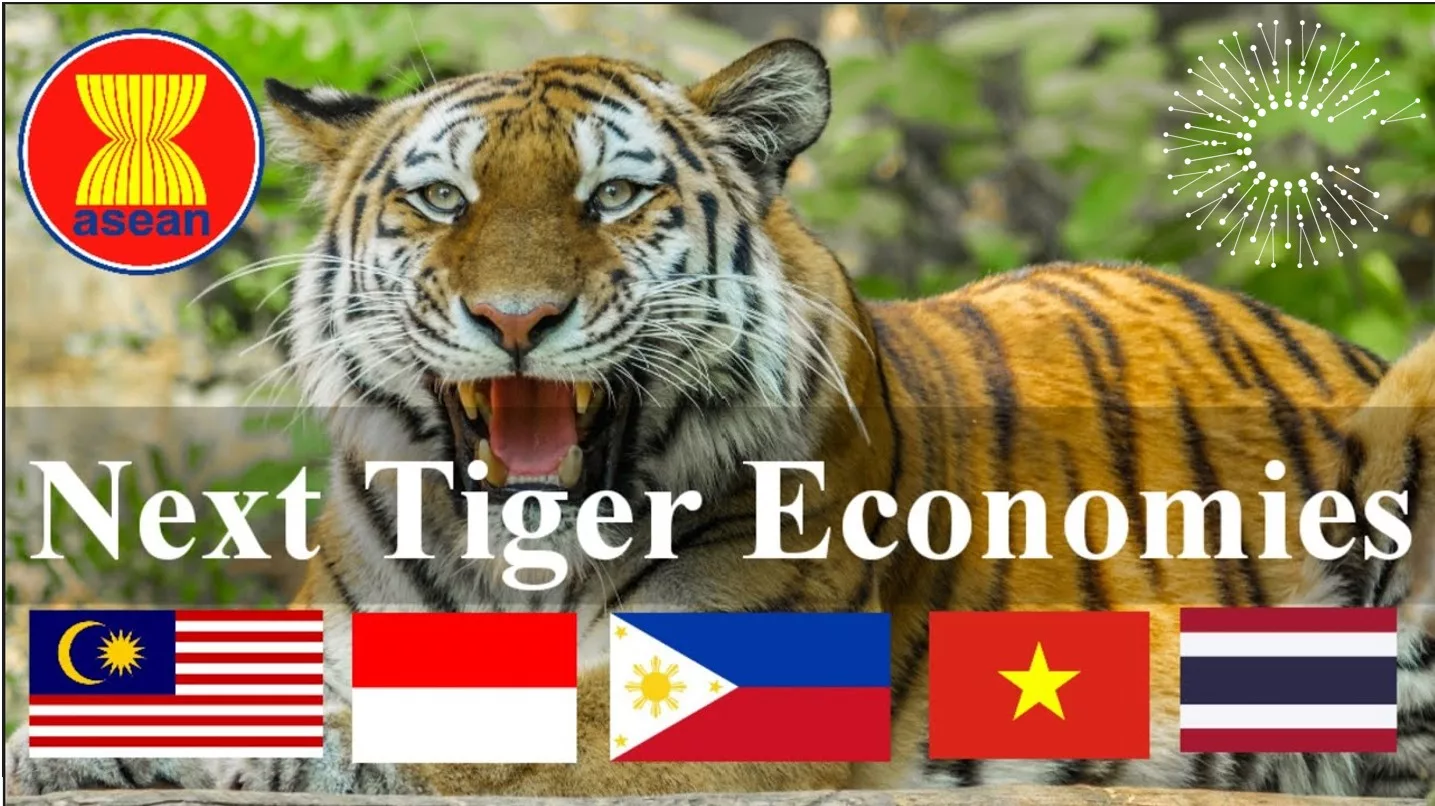2 min read –
The five tiger cubs economies –
Have become roaring adults –
But they don’t bite –
In the 2000s, Indonesia, Malaysia, the Philippines, Thailand, and Vietnam were dubbed the new or baby Asian tigers, driving growth through open borders and foreign capital.
20 years later, the tigers have matured.
While low-cost production remains key, their consumer markets have grown due to urbanization and demographic, ecological, and digital transitions.
Their integration within the Association of Southeast Asian Nations (ASEAN), which includes ten member states, has strengthened.
Intra-member free trade has created an integrated hub for foreign businesses.
Many use Singapore as an export base or springboard to other ASEAN countries.
Positioned centrally in global trade, ASEAN is poised to become a global hub by 2035-2040.
The Indo-Pacific region, where ASEAN is pivotal between China and India, will account for 50% of global GDP by 2040, per the IMF.
Singapore and the Malacca Strait are key nodes.
The EU’s Indo-Pacific strategy since the 2020s underscores ASEAN’s role in fostering multipolarity amid influence from China, the US, and others.
During the pandemic, firms shifted production to ASEAN to bypass China’s closures, boosting foreign direct investment by 79% in 2021, particularly in textiles, electronics, and assembly.
ASEAN’s many free-trade agreements enhance its role as a re-export hub.
Growth rates in 2024 averaged 5-7%, with Singapore and Brunei reaching high-income status.
However, reliance on trade (Singapore’s trade is triple its GDP) raises concerns amid rising global trade barriers.
Countries are diversifying partnerships (with the EU and Brazil for example) while enhancing local industries, like Indonesia’s processing sectors and Malaysia’s New Industrial Master Plan 2030.
ASEAN’s 700 million people, with a growing middle class projected to reach 450 million by 2030, drive consumption.
Urbanization (50% regional average) fuels demand for infrastructure, with $2.5 trillion in projects from 2020-2025.
The region is undergoing environmental, demographic, and digital transitions.
Countries pursue decarbonization (for example, Vietnam’s offshore wind, Malaysia’s hydrogen), face aging populations (necessitating healthcare infrastructure), and embrace digitalization through e-commerce platforms like Shopee and super apps like Grab.
Despite ASEAN’s integration, its diversity demands country-specific strategies.
For example, Singapore is a financial hub and Indonesia is rich in raw materials.
ASEAN has 700 million people, 10 countries, and a total GDP near USD 4 trillion.
There must be some market share for you in there.
We are CINTASIA, and we help you develop your sales and operations successfully in Indonesia. We specialize in technology and industrial equipment.
PS: If you enjoyed this article, check out our blog for more.
We have published 140+ other articles.
Go to www.cintasia.com/news-insights/
Source and credit: Business France
